-
 bitcoin
bitcoin $122288.232522 USD
0.16% -
 ethereum
ethereum $4480.662914 USD
-0.22% -
 xrp
xrp $2.962747 USD
-2.32% -
 tether
tether $1.000120 USD
-0.05% -
 bnb
bnb $1145.654223 USD
-2.07% -
 solana
solana $227.105217 USD
-1.67% -
 usd-coin
usd-coin $0.999548 USD
-0.02% -
 dogecoin
dogecoin $0.250875 USD
-2.04% -
 tron
tron $0.340654 USD
-0.49% -
 cardano
cardano $0.837968 USD
-2.52% -
 hyperliquid
hyperliquid $48.960449 USD
0.06% -
 chainlink
chainlink $22.049280 USD
-1.33% -
 ethena-usde
ethena-usde $1.000404 USD
0.02% -
 sui
sui $3.586212 USD
0.20% -
 avalanche
avalanche $29.894916 USD
-4.18%
How are disputes resolved on a blockchain?
Blockchain dispute resolution relies on consensus algorithms, smart contracts, and decentralized governance to automatically resolve conflicts without central authorities.
Aug 13, 2025 at 11:35 am
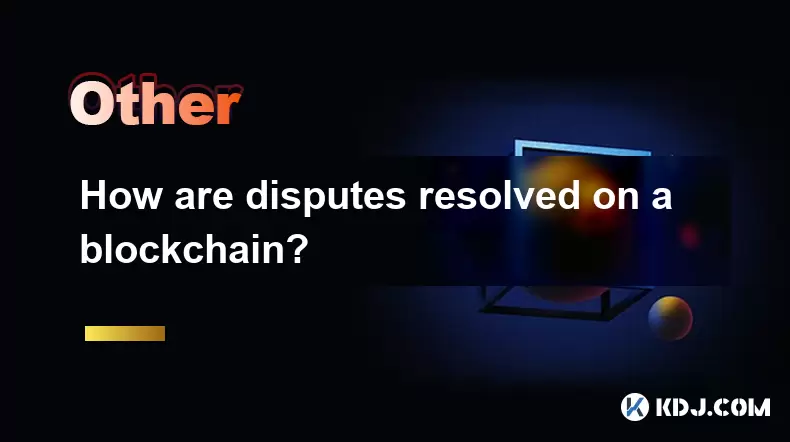
Understanding Blockchain Dispute Resolution Mechanisms
Disputes on a blockchain do not arise in the traditional legal sense, as blockchains are designed to minimize conflict through consensus and cryptographic verification. Instead of relying on centralized authorities, blockchain networks use decentralized consensus protocols to validate transactions and maintain integrity. When inconsistencies occur—such as double-spending attempts or conflicting transaction records—the network resolves them automatically based on predefined rules. The core principle is that the longest valid chain, as determined by the majority of nodes, is accepted as the truth. This mechanism ensures that even if malicious actors attempt to alter records, they would need to control more than 50% of the network’s computational power—a scenario known as a 51% attack—to override consensus.
Role of Consensus Algorithms in Conflict Resolution
Consensus algorithms are the backbone of dispute resolution in blockchain systems. Each algorithm handles disagreements differently, depending on the network’s design. In Proof of Work (PoW) systems like Bitcoin, miners compete to solve complex cryptographic puzzles. The first to solve it broadcasts the new block. Other nodes verify the solution and the included transactions. If a node receives two competing blocks simultaneously, it temporarily stores both but continues building on the block it received first. Eventually, the chain with more cumulative work becomes dominant. The discarded block, known as an orphan block, is abandoned. This process ensures that only one version of the ledger prevails.
In Proof of Stake (PoS) systems such as Ethereum 2.0, validators are chosen to propose and attest to blocks based on the amount of cryptocurrency they 'stake' as collateral. If a validator attempts to propose conflicting blocks (a behavior known as 'equivocation'), the network detects this through slashing conditions. The validator’s stake is partially or fully confiscated, and their reputation is damaged. This economic disincentive discourages dishonest behavior and aligns participants’ interests with network integrity.
Smart Contracts and Automated Dispute Handling
Smart contracts are self-executing agreements with terms directly written into code. They automatically enforce outcomes when predefined conditions are met, reducing the need for human intervention. However, disputes can arise if inputs are ambiguous or if external data (oracles) provide incorrect information. To address this, some blockchains integrate on-chain dispute resolution mechanisms. For example, platforms like Augur and Kleros use decentralized oracle networks and jury systems where token holders vote on the outcome of ambiguous events. Jurors are incentivized to vote honestly through reward and penalty systems—correct votes earn fees, while incorrect ones lose staked tokens.
In such systems, when a dispute arises over a smart contract’s outcome:
- Users can initiate a dispute by depositing a fee in the native token
- The system randomly selects a panel of jurors from a pool of staked participants
- Each juror reviews evidence and submits a decision
- Majority rulings determine the final outcome, which the smart contract then executes
This process is transparent, tamper-resistant, and avoids reliance on centralized arbitration.
Off-Chain Dispute Resolution and Layer-2 Solutions
Not all disputes are resolved directly on the main blockchain due to cost and speed limitations. Layer-2 solutions like state channels and rollups enable off-chain interactions while still guaranteeing finality on-chain. In state channels, parties transact privately and only submit the final state to the blockchain. If a dispute occurs during this phase, either party can initiate an on-chain challenge period. During this time, both sides present their latest signed state. The network validates signatures and timestamps, accepting the most recent valid state.
For example, in the Raiden Network (Ethereum’s state channel solution):
- Participants lock funds in a smart contract
- They exchange cryptographically signed balance updates off-chain
- If one party refuses to cooperate or submits a stale state, the other can broadcast the latest valid state
- A timeout period allows the honest party to respond before funds are released
This hybrid model balances efficiency with security, ensuring disputes are escalated only when necessary.
Governance-Based Conflict Resolution in DAOs
Decentralized Autonomous Organizations (DAOs) often face disputes over proposals, fund allocation, or protocol upgrades. These are resolved through on-chain governance, where token holders vote on resolutions. If a proposal passes, it is executed automatically via smart contracts. However, disagreements may persist, especially if voting power is concentrated. To mitigate this, some DAOs implement dispute escalation mechanisms. For instance, a minority can challenge a decision by initiating a governance appeal, requiring a higher quorum or broader participation.
In MakerDAO, a prominent example:
- Token holders vote on risk parameters and system changes
- If a controversial decision passes, dissenting members can fork the protocol, creating a new version with different rules
- This 'code is law' approach allows competing visions to coexist without central authority intervention
Such mechanisms empower users to exit or challenge outcomes, reinforcing decentralization.
Frequently Asked Questions
What happens if two miners find a block at the same time?When two miners broadcast valid blocks simultaneously, the network temporarily splits. Nodes accept the first block they receive and continue mining on that chain. As soon as the next block is found on either branch, the longer chain becomes canonical. The other block becomes an orphan, and its transactions are returned to the mempool for inclusion in future blocks.
Can a smart contract be changed after deployment if a dispute arises?Most smart contracts are immutable once deployed. However, some platforms allow upgradeable contracts using proxy patterns. These separate logic from storage, enabling developers to deploy new logic while preserving data. This process requires community approval in decentralized systems and is subject to governance rules.
How are disputes handled in permissioned blockchains?Permissioned blockchains, like Hyperledger Fabric, rely on pre-selected validators and legal agreements. Disputes are resolved through governance policies and auditing mechanisms. Since participants are known entities, they can enforce resolution via contractual obligations rather than cryptographic incentives.
What role do oracles play in blockchain dispute resolution?Oracles provide external data to smart contracts. If an oracle delivers incorrect information, it can trigger invalid outcomes. Decentralized oracle networks like Chainlink mitigate this by aggregating data from multiple sources and using reputation systems. If a dispute arises over data accuracy, the network can initiate a reputation-based challenge where node operators vote on the correct value.
Disclaimer:info@kdj.com
The information provided is not trading advice. kdj.com does not assume any responsibility for any investments made based on the information provided in this article. Cryptocurrencies are highly volatile and it is highly recommended that you invest with caution after thorough research!
If you believe that the content used on this website infringes your copyright, please contact us immediately (info@kdj.com) and we will delete it promptly.
- BlockDAG, DOGE, HYPE Sponsorship: Crypto Trends Shaping 2025
- 2025-10-01 00:25:13
- Deutsche Börse and Circle: A StableCoin Adoption Powerhouse in Europe
- 2025-10-01 00:25:13
- BlockDAG's Presale Buzz: Is It the Crypto to Watch in October 2025?
- 2025-10-01 00:30:13
- Bitcoin, Crypto, and IQ: When Genius Meets Digital Gold?
- 2025-10-01 00:30:13
- Stablecoins, American Innovation, and Wallet Tokens: The Next Frontier
- 2025-10-01 00:35:12
- NBU, Coins, and Crypto in Ukraine: A New Yorker's Take
- 2025-10-01 00:45:14
Related knowledge
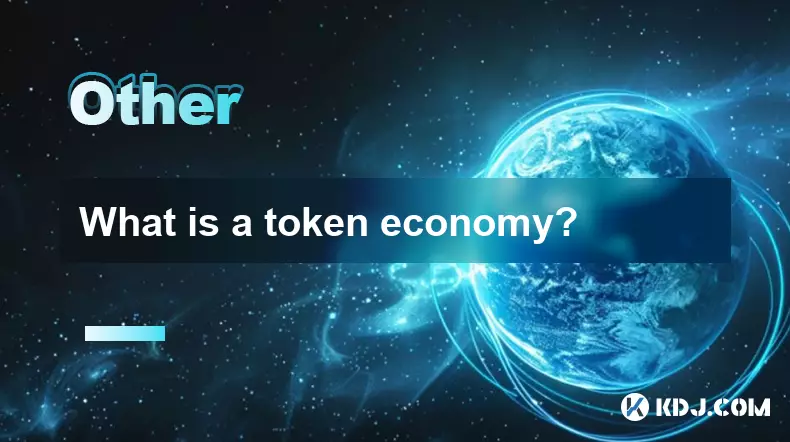
What is a token economy?
Sep 20,2025 at 12:18am
Understanding the Foundations of a Token Economy1. A token economy in the context of cryptocurrency refers to a system where digital tokens are used a...
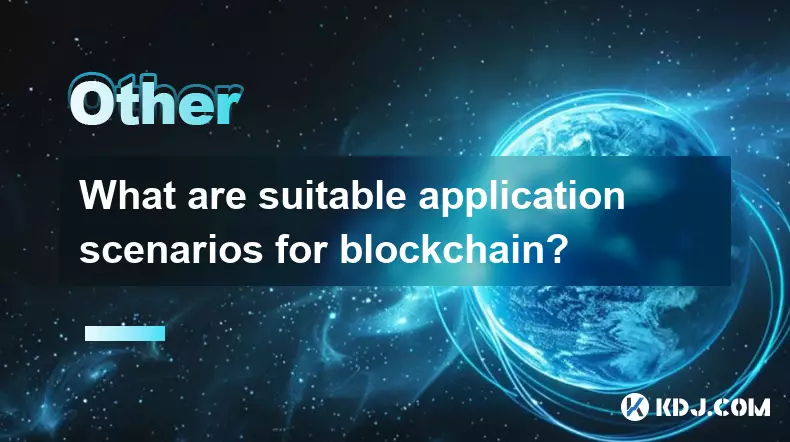
What are suitable application scenarios for blockchain?
Sep 20,2025 at 03:19am
Decentralized Finance (DeFi) Platforms1. Blockchain enables the creation of financial services without centralized intermediaries, allowing users to l...
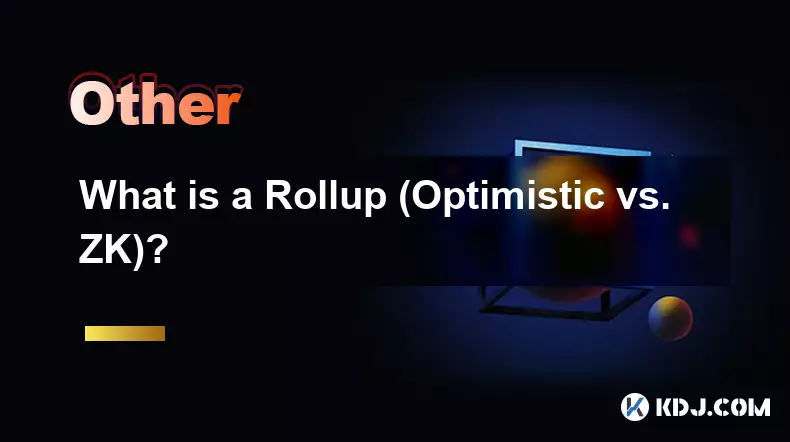
What is a Rollup (Optimistic vs. ZK)?
Sep 22,2025 at 03:00pm
Understanding Rollups in Blockchain Technology1. Rollups are layer-2 scaling solutions designed to increase transaction throughput on blockchains like...
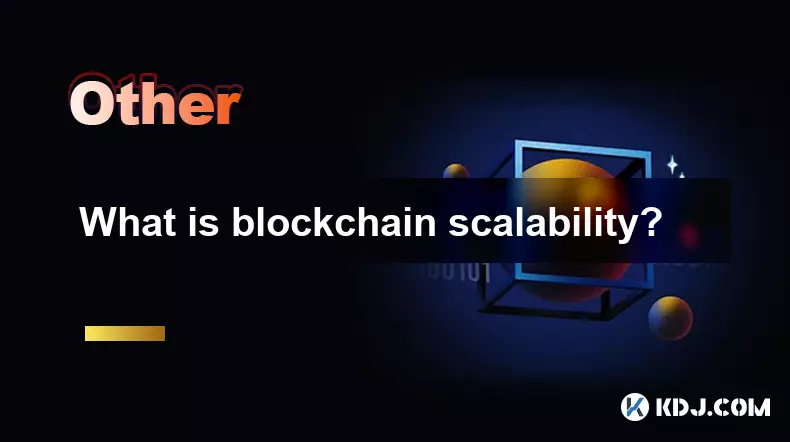
What is blockchain scalability?
Sep 19,2025 at 06:18am
Understanding Blockchain Scalability1. Blockchain scalability refers to a network's ability to handle an increasing number of transactions without com...
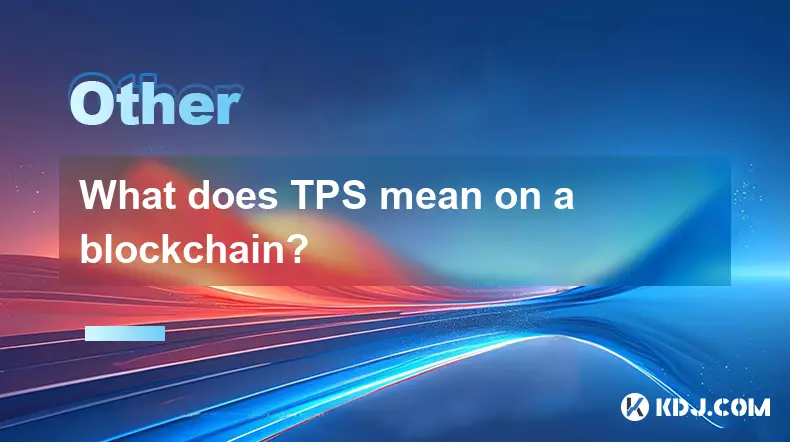
What does TPS mean on a blockchain?
Sep 21,2025 at 09:54am
Understanding TPS in Blockchain Technology1. TPS stands for Transactions Per Second, a metric used to measure the number of transactions a blockchain ...
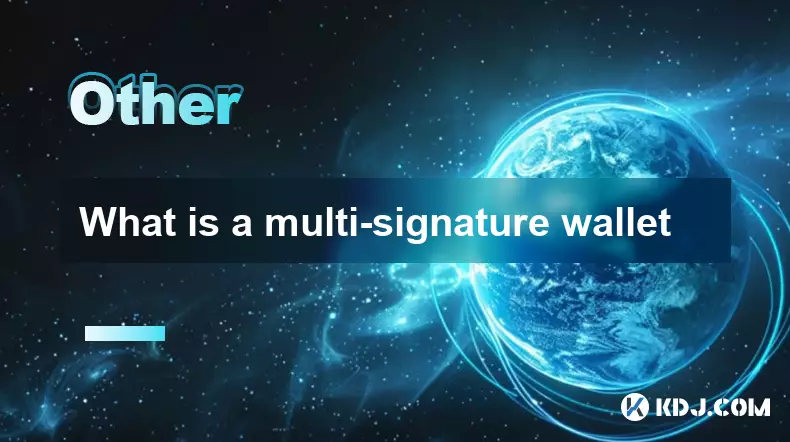
What is a multi-signature wallet
Sep 20,2025 at 07:00am
Understanding Multi-Signature Wallets in Cryptocurrency1. A multi-signature wallet, often referred to as a multisig wallet, is a type of cryptocurrenc...

What is a token economy?
Sep 20,2025 at 12:18am
Understanding the Foundations of a Token Economy1. A token economy in the context of cryptocurrency refers to a system where digital tokens are used a...

What are suitable application scenarios for blockchain?
Sep 20,2025 at 03:19am
Decentralized Finance (DeFi) Platforms1. Blockchain enables the creation of financial services without centralized intermediaries, allowing users to l...

What is a Rollup (Optimistic vs. ZK)?
Sep 22,2025 at 03:00pm
Understanding Rollups in Blockchain Technology1. Rollups are layer-2 scaling solutions designed to increase transaction throughput on blockchains like...

What is blockchain scalability?
Sep 19,2025 at 06:18am
Understanding Blockchain Scalability1. Blockchain scalability refers to a network's ability to handle an increasing number of transactions without com...

What does TPS mean on a blockchain?
Sep 21,2025 at 09:54am
Understanding TPS in Blockchain Technology1. TPS stands for Transactions Per Second, a metric used to measure the number of transactions a blockchain ...

What is a multi-signature wallet
Sep 20,2025 at 07:00am
Understanding Multi-Signature Wallets in Cryptocurrency1. A multi-signature wallet, often referred to as a multisig wallet, is a type of cryptocurrenc...
See all articles










































































